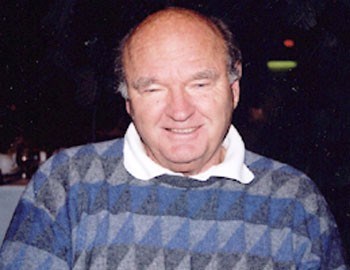Some people keep a journal; I keep historical notes. I write notes on scraps of paper and save them. I call it historical stuff, but my wife calls it junk.
I know that I have a disease, called packrat-itis, for which there is no cure. However, my symptoms only seem to cause discomfort for other people. The truth is, I don’t want a cure. If I weren’t a packrat, then I wouldn’t have had the opportunity to find the notes I had stashed and stroll down memory lane while we were moving into our new house.
One of my notes described staying in a hotel with a double bed that sagged so much in the middle that I couldn’t even roll over. There was a yellow Formica table with cigarette burns and chrome-plated legs that were half-rusty. Beside the bed was a machine called Magic Fingers. If you put a quarter into this machine, the bed would vibrate for 30 minutes, which was supposed to put you to sleep. It usually did, unless you also put a quarter in the machine for one-hour of black-and-white television.
When I found this note, I was instantly transported to the 1950s, when a motel room like that cost as much as $6.50 a night. In fact, that note had to be from the 1950s because on the same page, I wrote a note about a bumper sticker on a pretty lady’s new 1956 Chevy. The bumper sticker said, "Honk if you like to ski." I honked and she gave me an obscene gesture.
I found another historical note from 1968 about shooting mountain goats from a helicopter. At the time, I was producing 13 TV shows of Jean Claude Killy after he won his three gold medals in the Olympics in Grenoble.
While we waited for the weather to clear so we could ski and film on the Tasmian Glacier, our helicopter pilot took us mountain goat hunting. I was given the first shot because I was sitting alongside of where the chopper door was supposed to be. I luckily hit one with my first shot and watched it tumble hundreds of feet down the side of the cliff. Our pilot made the chopper drop like a safe with the door open just to show off, but the goat had finally stopped in a place that was so steep that the pilot couldn’t get the helicopter very close to it.
The pilot shouted, "Just throw out that rope and slide down to the end of it and I will swing you back and forth so you can drop off by the goat and collect your trophy. Don’t worry, there is a knot in the end of the rope."
I was worried.
I shouted back, "There must be about a thousand of those goats down there. Why don’t you just give me another bullet?"
We gave the second goat I shot to the hotel to barbecue for our dinner that night. I still have the mounted head in my garage today. If I hadn’t saved the historical note, my wife might never know the story behind the trophy, which she probably considers junk also.
I found another historical note from 1960 in Yugoslavia. This note described Ski Flying’s world championships, which were held on a hill where they were jumping over 400 feet. I had heard that Marshall Tito would be in attendance at the tournament and there was only one path up to the judge’s stand where he would watch the jumping. I got there early and positioned myself with my camera alongside of the trail. Later when he was about a hundred feet away, I felt something very hard pushing sharply into my ribs. It was the wrong end of an automatic rifle, held by a very tough looking and nervous soldier who apparently had instructions to clear anyone out of the trees on the way to the judge’s stand.
My favourite historical note read, "Stayed over to ski on Monday because it snowed all day Sunday." I don’t think I need to elaborate on that one.
Near that note, I found a one-day lift ticket to Squaw Valley from 1950 with a face value of $4. Those were the days!
I have no idea what all of this disconnected "historical stuff" means, except that I have spent all of my adult life collecting it, while never working a single day. But then I’m really not an adult, just a 14-year-old kid trapped in a senior citizen’s body.




